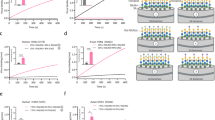Abstract
Human parainfluenza virus type 1 (hPIV1) and type 3 (hPIV3) are respiratory pathogen viruses that bind to terminal sialic acids of glycoconjugates on the cell surface hemagglutinin-neuraminidase glycoprotein. Sialic acid residues are linked to the galactose residue primarily by α2,3 or α2,6 linkages on the terminal of glycoprotein or glycolipids. One of the major determinants of pathogenicity or tissue tropism is virus binding or infection specificity for each sialyl linkage. Sialic linkage-modified human blood cells or mammalian cells that mainly have α2,3- or α2,6-linked sialic acid residues on the surface can be prepared by treatment with linkage-specific sialidases or sialyltransferases. These linkage-modified cells can be used in hemagglutination assays to estimate virus particles’ binding specificity, hemadsorption assays to estimate virus glycoproteins’ binding specificity, and virus infectivity assays. These methods contribute to identifying the specificity of sialic acid lineage recognition of the hPIV or other sialic acid-binding viruses.
Access this chapter
Tax calculation will be finalised at checkout
Purchases are for personal use only
Similar content being viewed by others
References
Henrickson KJ (2003) Parainfluenza viruses. Clin Microbiol Rev 16:242–264. https://doi.org/10.1128/cmr.16.2.242-264.2003
Scheid A, Caliguiri LA, Compans RW, Choppin PW (1972) Isolation of paramyxovirus glycoproteins. Association of both hemagglutinating and neuraminidase activities with the larger SV5 glycoprotein. Virology 50:640–652. https://doi.org/10.1016/0042-6822(72)90418-7
Kirsch S, Müthing J, Peter-Katalinić J, Bindila L (2009) On-line nano-HPLC/ESI QTOF MS monitoring of α2–3 and α2–6 sialylation in granulocyte glycosphingolipidome. Biol Chem 390:657–672. https://doi.org/10.1515/BC.2009.066
Suzuki Y (2005) Sialobiology of influenza: molecular mechanism of host range variation of influenza viruses. Biol Pharm Bull 28:399–408. https://doi.org/10.1248/bpb.28.399
Suzuki T, Portner A, Scroggs RA et al (2001) Receptor specificities of human respiroviruses. J Virol 75:4604–4613. https://doi.org/10.1128/JVI.75.10.4604-4613.2001
Fukushima K, Takahashi T, Ito S et al (2014) Terminal sialic acid linkages determine different cell infectivities of human parainfluenza virus type 1 and type 3. Virology 464–465:424–431. https://doi.org/10.1016/j.virol.2014.07.033
Fukushima K, Takahashi T, Ueyama H et al (2015) Amino acid substitutions contributing to α2,6-sialic acid linkage binding specificity of human parainfluenza virus type 3 hemagglutinin-neuraminidase. FEBS Lett 589:1278–1282. https://doi.org/10.1016/j.febslet.2015.03.036
Hoyer LL, Roggentin P, Schauer R, Vimr ER (1991) Purification and properties of cloned Salmonella typhimurium LT2 sialidase with virus-typical kinetic preference for sialyl a2^>3 linkages. J Biochem 110:6
Tsukamoto H, Takakura Y, Yamamoto T (2007) Purification, cloning, and expression of an α/β-galactoside α-2,3-sialyltransferase from a luminous marine bacterium, Photobacterium phosphoreum. J Biol Chem 282:29794–29802. https://doi.org/10.1074/jbc.M701907200
Yamamoto T, Nakashizuka M, Terada I (1998) Cloning and expression of a marine bacterial -galactoside 2,6-sialyltransferase gene from Photobacterium damsela JT0160. J Biochem (Tokyo) 123:94–100. https://doi.org/10.1093/oxfordjournals.jbchem.a021921
Bulai T (2003) Uptake of sialic acid by human erythrocyte. Characterization of a transport system. Biochimie 85:241–244. https://doi.org/10.1016/S0300-9084(03)00059-2
Acknowledgments
Keijo Fukushima is a recipient of a scholarship by the Honjo International Scholarship Foundation. This work was supported by JSPS KAKENHI, Series of Single-year Grants, 2510690, in part, and by a MEXT/JSPS KAKENHI Grant (number C; 23590549).
Author information
Authors and Affiliations
Corresponding author
Editor information
Editors and Affiliations
Rights and permissions
Copyright information
© 2022 The Author(s), under exclusive license to Springer Science+Business Media, LLC, part of Springer Nature
About this protocol
Cite this protocol
Fukushima, K., Takahashi, T., Suzuki, T. (2022). Characterization of Human Parainfluenza Virus Receptor Using Terminal Sialic Acid Linkage-Modified Cells. In: Suzuki, Y. (eds) Glycovirology. Methods in Molecular Biology, vol 2556. Humana, New York, NY. https://doi.org/10.1007/978-1-0716-2635-1_13
Download citation
DOI: https://doi.org/10.1007/978-1-0716-2635-1_13
Published:
Publisher Name: Humana, New York, NY
Print ISBN: 978-1-0716-2634-4
Online ISBN: 978-1-0716-2635-1
eBook Packages: Springer Protocols




